Introduction
Laser technology has revolutionized various industries, from telecommunications to healthcare, and at the heart of this technology are laser crystals. These unique materials are the driving force behind the generation of laser light. Understanding the optics of laser crystals and how their properties impact laser performance is crucial for optimizing their use in various applications.
The Fundamentals of Laser Crystals
Laser crystals are solid-state materials that can amplify light through the process of stimulated emission. They are characterized by their unique optical properties, which allow them to produce highly concentrated and coherent light.
Laser crystals are typically composed of a host material, often a transparent crystal, doped with specific ions. The choice of host material and dopant ions significantly influences the optical properties of the laser crystal, including its emission wavelength, efficiency, and thermal stability.
There are various types of laser crystals, each with unique properties. Common examples include ruby crystals, neodymium-doped yttrium aluminum garnet (Nd:YAG) crystals, and titanium-doped sapphire (Ti:Sapphire) crystals. The choice of laser crystal depends on the specific application and performance requirements.
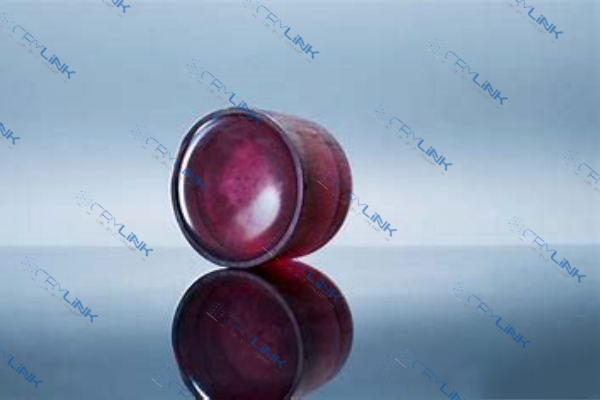
Optical Properties of Laser Crystals
The optical properties of laser crystals are fundamental to their function. These properties include absorption and emission spectra, refractive index, and thermal lensing, among others.
The absorption and emission spectra of a laser crystal determine the wavelengths of light it can absorb and emit. These spectra are primarily influenced by the dopant ions within the crystal.
The refractive index of a laser crystal affects how light travels through the material. A high refractive index can lead to greater light confinement within the crystal, enhancing the efficiency of light amplification.
Thermal lensing is a phenomenon that occurs when a laser crystal heats up during operation, causing changes in its refractive index. This can lead to the formation of a lens within the crystal, which can impact the quality and stability of the laser output.
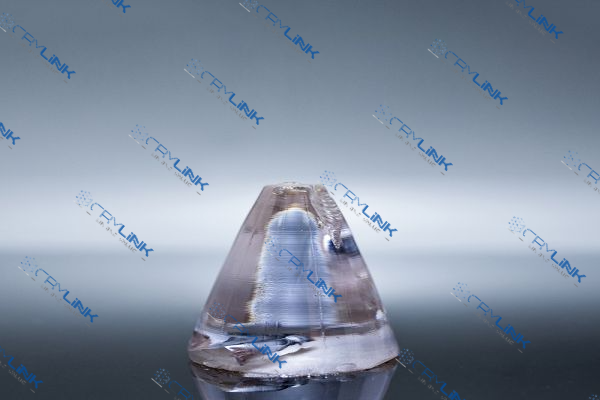
How Crystal Properties Impact Laser Performance
The properties of laser crystals directly influence the performance of laser systems. Understanding these impacts can guide the selection and design of laser crystals for specific applications.
Influence on Laser Wavelength
The output wavelength of a laser system is one of its most critical characteristics, determining its suitability for various applications. This wavelength is directly influenced by the properties of the laser crystal used in the system, particularly the choice of dopant ions.
Dopant ions are atoms or molecules introduced into the host crystal to alter its properties. They are responsible for the absorption and emission of light within the crystal, with each type of ion having a specific absorption and emission spectrum. These spectra represent the range of wavelengths that the ions can absorb and emit, respectively.
When a laser crystal is pumped with light, the dopant ions absorb this light and become excited. They then return to their ground state by emitting light, a process known as stimulated emission. The wavelength of the emitted light is determined by the emission spectrum of the dopant ions. Therefore, by choosing dopant ions with a specific emission spectrum, we can control the output wavelength of the laser.
For instance, neodymium-doped yttrium aluminum garnet (Nd:YAG) crystals are widely used in laser systems due to their emission spectrum, which includes a strong line at 1064 nanometers. This wavelength is in the near-infrared region, making Nd:YAG lasers ideal for applications such as laser cutting and welding, medical procedures, and scientific research.
On the other hand, titanium-doped sapphire (Ti:Sapphire) crystals have a broad emission spectrum ranging from 660 to 1050 nanometers. This allows Ti:Sapphire lasers to be tuned to emit light at various wavelengths within this range, making them highly versatile for different applications, including spectroscopy and ultrafast laser studies.
In conclusion, the properties of laser crystals, particularly the choice of dopant ions, have a significant influence on the output wavelength of laser systems. By understanding this relationship, we can design and optimize laser systems for specific applications, harnessing the power of light in the most effective way.
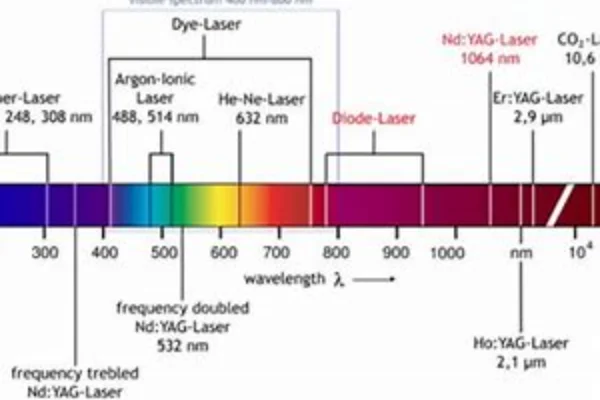
Impact on Laser Efficiency
The efficiency of a laser system is a critical parameter that determines its performance and practicality for various applications. It is defined as the ratio of the output laser power to the input pump power. The properties of the laser crystal, including its absorption and emission cross-sections, thermal conductivity, and refractive index, significantly influence this efficiency.
The absorption cross-section of a laser crystal is a measure of its ability to absorb the pump light, while the emission cross-section is a measure of its ability to emit laser light. These cross-sections are determined by the dopant ions in the crystal. A high absorption cross-section ensures that most of the pump light is absorbed and used to excite the dopant ions. A high emission cross-section, on the other hand, ensures that a large proportion of the excited ions contribute to the laser action. Therefore, choosing a laser crystal with high absorption and emission cross-sections can enhance the efficiency of the laser system.
Thermal conductivity is another crucial property of laser crystals that impacts laser efficiency. When a laser crystal is pumped with light, it heats up due to the absorption of the pump light. This heat needs to be efficiently dissipated to prevent damage to the crystal and maintain the stability of the laser output. Laser crystals with high thermal conductivity are better at dissipating this heat, thereby enhancing the overall efficiency of the laser system.
The refractive index of the laser crystal also plays a role in determining laser efficiency. A high refractive index can lead to greater confinement of light within the crystal, enhancing the interaction between the light and the dopant ions. This can increase the efficiency of the light amplification process, leading to a more efficient laser system.
In conclusion, the properties of laser crystals have a significant impact on the efficiency of laser systems. By understanding these impacts and optimizing the properties of the laser crystal, we can design more efficient laser systems. This not only improves the performance of the laser system but also reduces its power consumption, making it more economical and environmentally friendly.
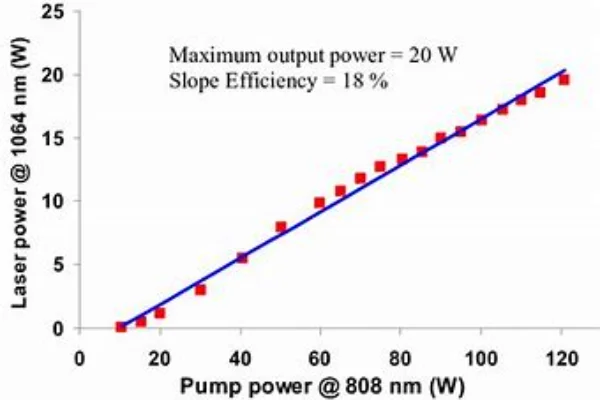
Role in Laser Beam Quality
The quality of a laser beam is a crucial factor that determines the effectiveness of a laser system in its intended application. It refers to the coherence, stability, and focusability of the laser output, all of which are significantly influenced by the properties of the laser crystal.
One of the key properties of a laser crystal that impacts beam quality is its refractive index. The refractive index determines how light travels through the crystal, with a higher refractive index leading to greater confinement of light within the crystal. This confinement enhances the interaction between the light and the dopant ions, leading to more efficient light amplification and a more coherent and stable laser beam.
Thermal lensing is another phenomenon that can impact beam quality. As a laser crystal is pumped with light, it heats up, leading to changes in its refractive index. This can result in the formation of a thermal lens within the crystal, which can distort the laser beam and degrade its quality. Laser crystals with high thermal conductivity are better at dissipating this heat, reducing the effects of thermal lensing and maintaining beam quality.
The dopant ions within the laser crystal also play a role in determining beam quality. Different ions have different emission cross-sections, which influence the spatial distribution of the laser output. By carefully choosing the dopant ions, we can control the beam profile and ensure a high-quality laser output.
Finally, the physical dimensions and surface quality of the laser crystal can also impact beam quality. Imperfections on the crystal surface can scatter the laser light, leading to beam distortion. Similarly, the size and shape of the crystal can influence the mode structure of the laser output, affecting its focusability.
In conclusion, the properties of laser crystals play a pivotal role in determining the quality of the laser beam. By understanding these impacts and optimizing the properties of the laser crystal, we can design laser systems that produce high-quality beams, enhancing their effectiveness in various applications.
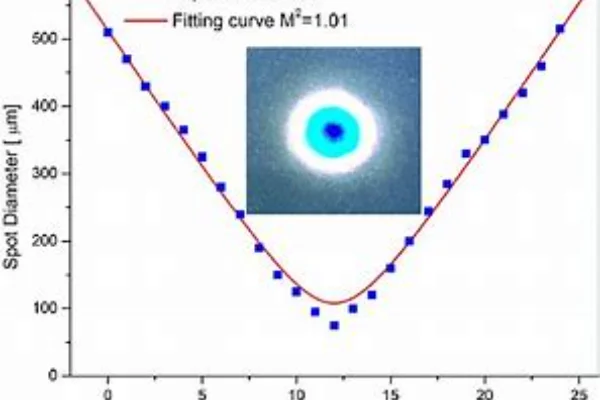
Conclusion
In conclusion, the optics of laser crystals play a pivotal role in determining the performance of laser systems. By understanding these properties and their impacts, we can optimize the design and operation of laser systems for a wide range of applications.
FAQs
- Q1: What are laser crystals?
- A1: Laser crystals are solid-state materials that amplify light through stimulated emission to produce laser light.
- Q2: What factors influence the optical properties of laser crystals?
- A2: The optical properties of laser crystals are influenced by their composition, including the choice of host material and dopant ions.
- Q3: How do the properties of laser crystals impact laser performance?
- A3: The properties of laser crystals, such as their absorption and emission spectra and refractive index, directly impact the performance of laser systems, including their output wavelength, efficiency, and beam quality.
- Q4: What is thermal lensing in laser crystals?
- A4: Thermal lensing is a phenomenon that occurs when a laser crystal heats up during operation, leading to changes in its refractive index and potentially impacting the quality and stability of the laser output.
- Q5: How can understanding the optics of laser crystals improve laser design?
- A5: By understanding the optics of laser crystals, we can optimize the selection and design of these materials for specific applications, enhancing the performance and efficiency of laser systems.
References:
1.Sangla, Damien & Didierjean, Julien & Aubry, Nicolas & Perrodin, Didier & Balembois, Francois & Lebbou, Kheirredine & Brenier, Alain & Georges, Patrick & Fourmigue, Jean-Marie & Tillement, Olivier. (2006). High power laser with Nd:YAG single-crystal fiber grown by micro-pulling down technique. Proceedings of SPIE.
2. Magnus, Carl. (2012). Hybrid Metal to Polymer Joining Methods.
3. Qin, Zhipeng & Xie, Guoqiang & Ma, Jingui & Yuan, Peng & Qian, Liejia. (2017). Mid-infrared Er:ZBLAN fiber laser reaching 3.68 μm wavelength. Chinese Optics Letters. 15. 111402. 10.3788/COL201715.111402.

Frank
Frank graduated from the University of Shanghai for Science and Technology, majoring in optics. As a technical engineer at Crylink Company, he deeply understands crystal materials and laser components.
Related Video(s) with this Article
Related Product(s) with this Article
Related Application(s) with this Article
